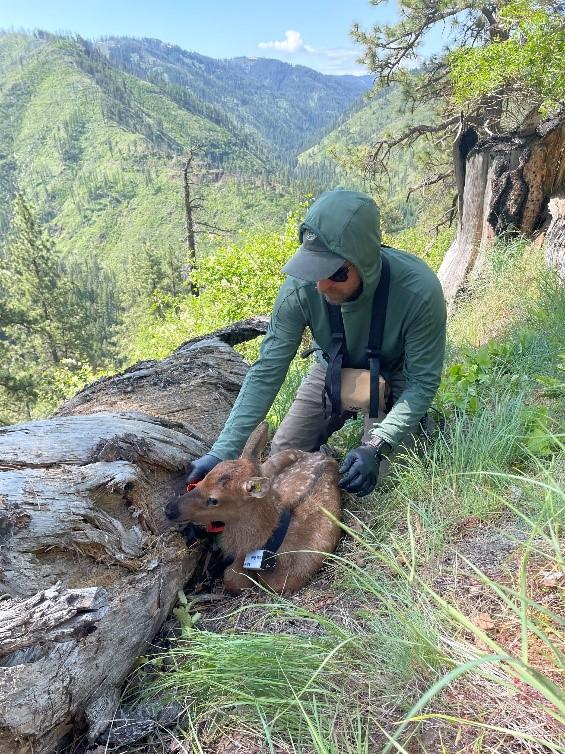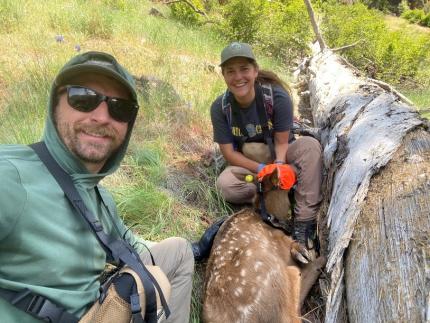Managing Wildlife Populations
White Nose Syndrome Probiotic Bat Captures: District 13 Wildlife Biologist Licence, Diversity Program staff members, US Fish and Wildlife Services (USFWS) biologists, and WDFW Wildlife Veterinarian Dr. Haman gathered at an annual study site in the Darrington area to capture and sample a maternity colony of Yuma myotis. Although captures were relatively low on the first capture night, team spirits were high, and the bats appeared healthy. This research effort is a novel approach to utilizing naturally occurring bacteria to reduce impact of the causative agent of White Nose Syndrome (WNS). One more capture event is planned for later this summer.

Island Marble Butterfly (Euchloe ausonides insulanus) Monitoring: Wildlife Biologist Licence, Diversity Program staff, and numerous other partners wrapped up a productive field season of island marble butterfly (IMB) and host plant habitat monitoring. With a significant reduction of host plant habitat in a core occurrence area for IMB this year, it has been a busy year for dispersal which has resulted in IMB occupancy at two new Candidate Conservation Agreement with Assurances (CCAA) properties! WDFW and USFWS staff members piloted numerous new tools for habitat monitoring including a Rapid Habitat Assessment protocol and drone surveys.


Sand Verbena Moth (Copablepharon fuscum) Surveys: Opportunistic and targeted surveys for species of Greatest Conservation Need, sand verbena moths, on San Juan Island were successful this year with numerous moths captured and documented. District 13 Biologist Licence, Diversity Program staff members, and partners captured moths via net and ultraviolet moth traps. These surveys help document and inform our understanding of species distribution for an understudied and charismatic invertebrate.



Propertius Duskywing (Erynnis propertius) Surveys on Orcas Island: Diversity staff members, District Wildlife Biologist Licence, and Lummi Nation biologists conducted a second round of propertius duskywing surveys associated with a Competitive State Wildlife Grant on Turtleback Mountain of Orcas Island. These “pre-treatment” surveys will provide a baseline indicator of duskywing presence prior to habitat improvement treatments to species host plant, Gary oaks. Once habitat improvements are completed, “post-treatment” surveys will be conducted to monitor any changes in the local duskywing population.


Blue Mountain Elk Calf Captures: District 13 Biologist Licence traveled across the state to join the top-notch capture team of the Dayton Game Management Unit (GMU) 162 to wrangle, collar, and collect data on numerous elk calves. One of the primary objectives of the study is to monitor survival and determine mortality causes of calves of the Blue Mountain elk herd.

